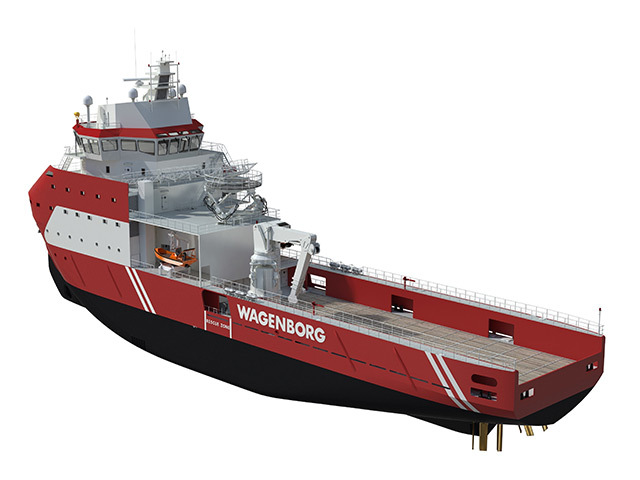
Barge Master has secured a contract with the firm Niestern Sander for employment of the Barge Master motion compensated crane on its new “walk-to-work” vessel, to be built for Wagenborg.
In this all-Dutch arrangement, the vessel including the Barge Master system will be ready in the first quarter of 2015. NAM will use the motion compensated crane to service and maintain gas production platforms in the North Sea.
Oil and gas platforms have frequently become smaller and more flexible over the past 40 years.
Many in the Southern North Sea, for example, no longer have a resident crew or helicopter pads. This means frequent journeys to and from installations by ship in order to perform maintenance work.
With Wagenborg’s innovative walk-to-work vessel the claim is that operations can be executed in a safer, more efficient and effective manner.
The multi-function vessel will apparently for the first time accommodate both crew and up to 40 service technicians; chemicals can be stored and transferred safely; and by making use of Marge Mastger’s innovative active heave compensated system (specifically the T40 model, it will be possible to transfer materials in fairly poor sea conditions . . . wave heights of up to 3m (just over 10ft).
It is through utilising new technologies such as this that NAM is able to safely continue harvesting gas on the North Sea with an extended weather window and less down time.
Barge Master is a young company. It develops and produces wave compensation platforms for the marine and offshore industry.
The Barge Master T40 is capable of compensating an offshore knuckle boom/telescopic boom crane with a capacity of 15 tonnes.
The servicing of wind turbines or unmanned production platforms are seen as typical applications for the system.
The T40 is based on the same principle as the company’s T700 package whereby roll, pitch and heave are compensated, while surge, sway and yaw are fixed.
The company’s provision of motion compensated platforms for cranes or supply barges are typical examples of Barge Master applications.
The technology has been developed together with Bosch Rexroth and the Marin Maritime Research Institute.
Recommended for you
